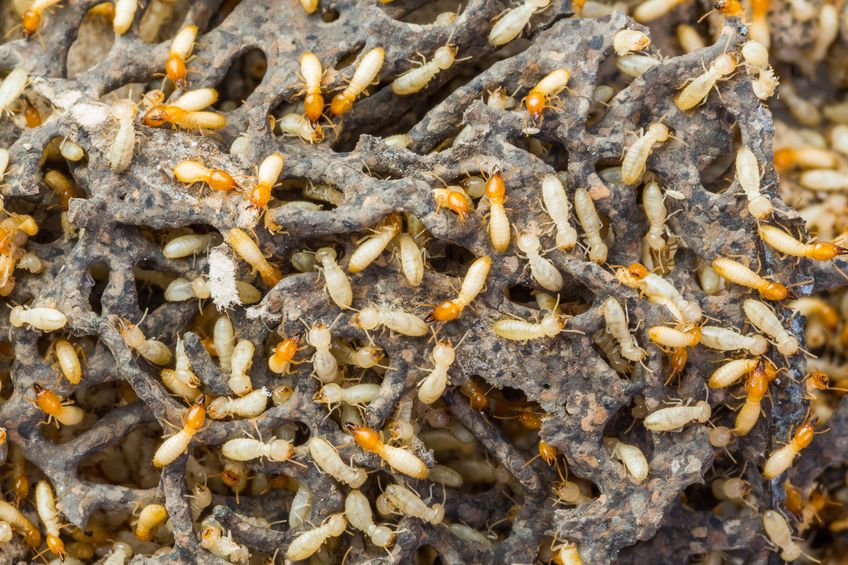It should not come as a surprise to learn that many pest control professionals consider subterranean termites to be the most difficult insect pests to control. While insect pests like cockroaches, bed bugs and ants are also very difficult to control due to their habit of nesting within inaccessible indoor areas like wall voids, subterranean termites remain out of human sight at all times. Of course, reproductive alates are sometimes spotted swarming near homes, but alates of the eastern subterranean termite species in Massachusetts are highly unlikely to initiate infestations within structural wood.
Due to their cryptic underground habitat where subterranean termite workers frequently access indoor structural wood without notice, detecting and eliminating existing subterranean termite infestations within homes has always been a challenge. Because of this, termite control methods have historically focused on preventing subterranean termite infestations rather than eradicating existing infestations.
Modern subterranean termite control methods consist primarily of annual inspections, insecticide barriers around the perimeter of homes, baiting systems, and termite-resistant lumber. Many pest control professionals and extension entomologists are frequently asked about the efficacy of do-it-yourself termite baits found in retail stores. While there are many good reasons to doubt the efficacy of over-the-counter subterranean termite control products, the fact is, such products have not been subjected to much scientific scrutiny. That being said, many consumers have admitted that paying for annual termite inspections would have been cheaper in the long run than paying for several over-the-counter subterranean termite baits.
Over-the-counter subterranean termite bait stations contain cheap cardboard that rapidly degrades in soil. Because of this, store-bought bait stations must be replaced frequently, which may ultimately end up costing more than a professional treatment. Researchers at Texas A&M have carried out repeated efficacy tests on multiple DYI subterranean termite control products, but none have proven sufficient for eliminating colonies. Many consumers are comforted by the money back guarantee offered by such products, but these refunds will hardly be of consolation if structural wood members need to be replaced due to heavy termite damage.
Have you ever found termite-damaged structural wood within your home?

